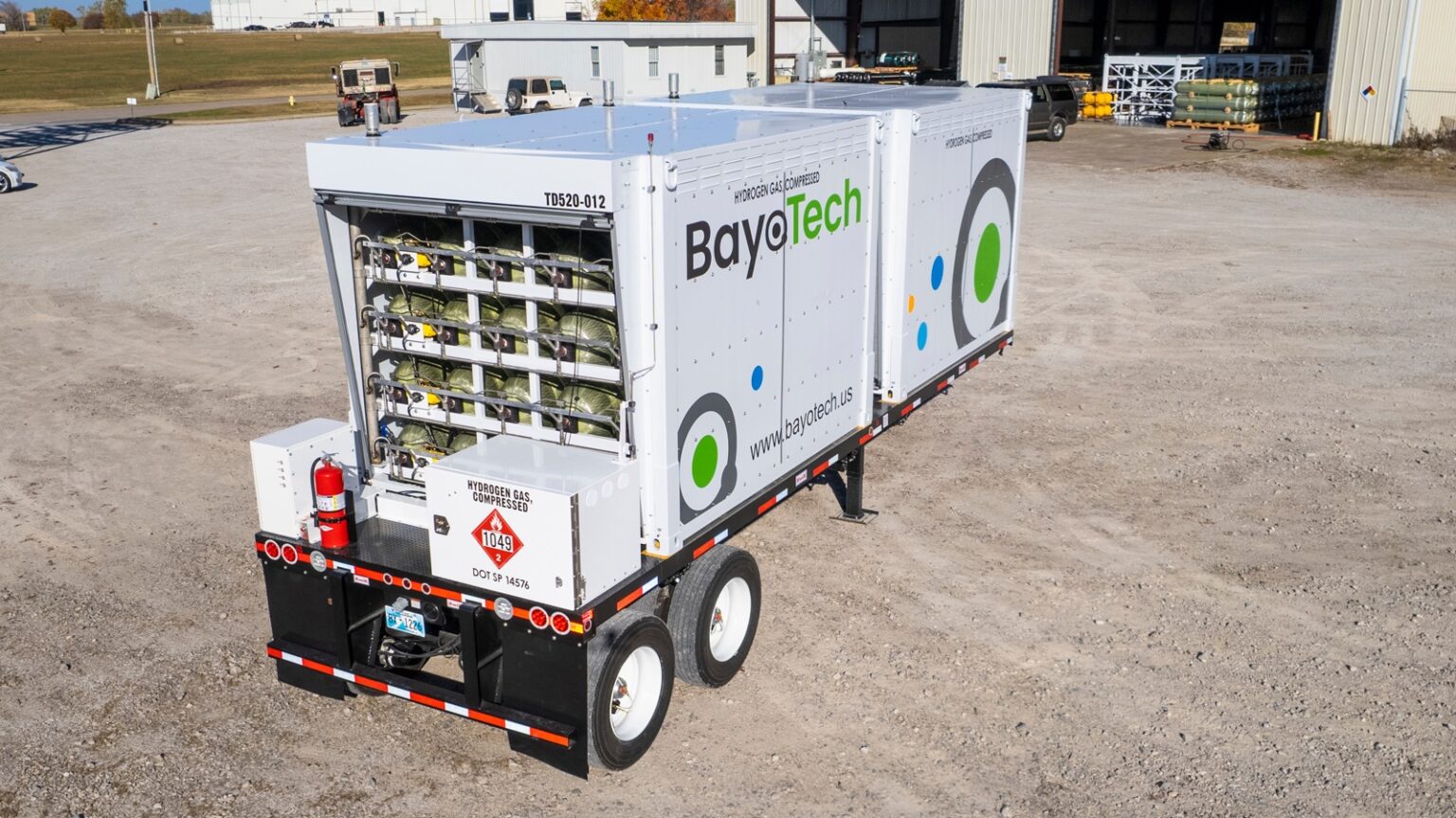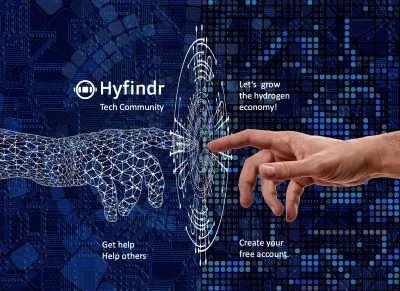- What is a hydrogen trailer?
- Which types of hydrogen transport trailers exist?
- Which type of tubes and cylinders are generally used for hydrogen transport trailers?
- What makes hydrogen challenging to transport?
- Why transport hydrogen by road instead of by pipeline?
- How much hydrogen can be transported with standard trucks in relation to the hydrogen compression and size of cylinders used?
- What are the advantages of maximizing the amount of hydrogen carried on the trailer?
- Which measures are taken to prevent losses of hydrogen during transportation?
- Which specific safety measures are required for hydrogen trailers?
- Which measures are taken so that the hydrogen purity level is not degraded in the transport?
- Which innovations can be expected to reduce the transportation costs when using hydrogen trailers?
- Why are diesel trucks and not fuel cell electric trucks used to transport green hydrogen?
- Conclusion: the future of the hydrogen economy hinges on widespread use of the hydrogen transport trailer!
Browse hydrogen trailers from leading suppliers on our marketplace!
What is a hydrogen trailer?
A hydrogen trailer more commonly refers to either a high-pressure gaseous or cryogenic liquid hydrogen transport used to move hydrogen from the point of production to the end-user. Gaseous hydrogen tube trailers use high-pressure composite cylinders or lower-pressure steel cylinders to contain and transport hydrogen. These trailers consist of multiple cylinders manifolded together. Liquid hydrogen trailers are a costly and specialized type of trailer used to keep the very low-temperature hydrogen cold and mitigate the rate of evaporation.
Which types of hydrogen transport trailers exist?
Newer high-pressure gas trailers in hydrogen service will range from 5075psig/350bar up to 7500psig/517bar fill pressures using composite cylinders. Older style, gaseous hydrogen trailers use heavy steel cylinders only capable of being filled to 2400psig/165bar. Since hydrogen is a compressible gas, storing and transporting hydrogen at higher pressures, such as 7500psig, increases the payload by three times (3x) over older, conventional steel tube-based trailers.
A liquid hydrogen trailer is a specialized, vacuum jacketed trailer used to store and transport hydrogen in liquid form, the coldest substance known: -423°F/-253°C. Though it takes a considerable amount of energy to liquefy hydrogen, it does increase the amount able to be transported by up to four times (4x) compared to 7,500psig gas trailers and over ten times (10x) conventional steel tube trailers. The costly liquid hydrogen trailers are used to transport hydrogen over long distances and take advantage of the logistical efficiencies of the larger payload.
Today hydrogen distribution mostly relies on compressed gas trailer trucks for distances less than 300 kilometers. Liquid hydrogen trailers are often used to transport higher volumes of hydrogen longer distances. Each option has advantages and disadvantages, and the most economical choice will vary according to geography, distance, scale, and the required end use.
Which type of tubes and cylinders are generally used for hydrogen transport trailers?
There are a variety of compressed hydrogen cylinders available for storage and transport that provide a range of pressure types. These range from Type I to Type V. Each cylinder allows for different pressure ranges and can come in various sizes. The most commonly used cylinder type for a hydrogen transport trailer is Type III.
What makes hydrogen challenging to transport?
The unique properties of hydrogen can make it expensive to transport in large commercial quantities over long distances. Hydrogen is not just the smallest element on earth, it is also the lightest. Due to its extremely low density, it must be either pressurized and delivered as a compressed gas or liquefied to transport it any distance. There are also safety considerations. With its small molecule size, hydrogen can embrittle materials and easily escape from containment. Given its wide flammability range, risk of combustion must always be a consideration.
Why transport hydrogen by road instead of by pipeline?
Pipelines are already deployed in regions with substantial and large-scale demand for hydrogen. Transporting gaseous hydrogen via existing pipelines is a low-cost option for delivering large volumes of hydrogen. But the high capital cost of new pipeline construction constitutes a major barrier for widespread expansion. In regions where demand is at a smaller scale, or emerging, hydrogen delivery via hydrogen trailer is a more economical option that is faster to deploy. It also offers increased flexibility as the hydrogen demand market continues to evolve. There is a move towards a model of decentralized hydrogen production to serve these growing fleets of fuel cell vehicle and power applications. Cost-effective ‘last-mile’ delivery of this hydrogen will be a critical success factor for this distributed hydrogen production model.
How much hydrogen can be transported with standard trucks in relation to the hydrogen compression and size of cylinders used?
Type III cylinders are made with a lightweight aluminum liner and then wrapped in a carbon composite wrapping. These provide a much lighter weight than Type II cylinders and can provide pressures from 300 bar up to 700 bar. Type IV cylinders are composite cylinders made using carbon fiber with a polymer liner and provide pressures up to 700 bar. While they are the lightest cylinders available, they are also much more costly and less resistant to damage and leakage. A typical 450 bar hydrogen tube trailer with a pod length of 3.3 meters would carry about 153 kilograms of hydrogen.

Hydrogen Trailer Example
What are the advantages of maximizing the amount of hydrogen carried on the trailer?
For hydrogen distributors, driver productivity is an important determinate of profitability. Trailer operators aim to optimize their routes to achieve the highest possible equipment utilization. This includes servicing multiple customers per trailer load and minimizing “empty return hauls” to refill the trailer. With the current massive shortage of truck drivers, optimizing delivery is a top-of-mind consideration.
Which measures are taken to prevent losses of hydrogen during transportation?
As a result of their non-permeable liner, Type I, II, and type III cylinders, aside from the valve on the cylinders, require no special measures to prevent loss of hydrogen, essentially allowing the hydrogen to be stored safely for an indefinite period of time. The plastic, Type IV cylinder-based means of transport allow slow hydrogen permeation through the internal plastic liner. There are no known steps to prevent this from occurring. Despite the costly vacuum jackets a liquid hydrogen transport might have, heat is invariably absorbed by the ultra-cold liquid hydrogen, causing it to vaporize into the atmosphere. Leak rates of liquid hydrogen transport will range from approximately 1% to 2% per day. There is no mitigating this other than minimizing the time the liquid hydrogen remains in the transport.
Which specific safety measures are required for hydrogen trailers?
In the United States, hydrogen trailers are regulated by the U.S. Department of Transportation (DOT), which has codified specific regulations governing high-pressure gas trailers and cryogenic, liquid gas trailers, found in Part 49CFR of the Federal Register. Fire and planning departments have an increasing awareness of hydrogen transport being used on-site by many businesses. In these cases, fire and local regulators request that hydrogen transports comply with NFPA2 while the trailers are parked and used for any extended period.
Which measures are taken so that the hydrogen purity level is not degraded in the transport?
Hydrogen purity is extremely critical to the end-user, and certain impurities can have a damaging impact on the end application. The primary step taken to ensure the purity of the hydrogen during transport is the proper preparation of the cylinders so as not to contaminate the pure hydrogen that is filled into the trailer. Metal lined cylinders such as Types I, II, and III can be vacuumed to low levels and then purged several times with hydrogen. Type IV cylinders present a problem as they cannot be vacuumed since that would collapse the internal liner, so large volumes of hydrogen must be used to purge and dilute any contaminants in the cylinders before a final fill.
Which innovations can be expected to reduce the transportation costs when using hydrogen trailers?
Concerning high-pressure trailers, they are already very capacity and cost-optimized while adhering to the various regulations. Areas of possible cost reductions would be lower G-loading requirements for the cylinder support structures and methods to reduce the thickness of Type III metal liners to save weight and cost.
Why are diesel trucks and not fuel cell electric trucks used to transport green hydrogen?
An important consideration is how to transport hydrogen via road without undoing many of the fuel’s emission-reduction gains in the process. Creating hydrogen hubs, or regional clusters of hydrogen supply and demand, will minimize transportation distances and decrease emissions generated via transport using diesel trucks. As the question implies, pulling the trailer with a zero-emission truck is the ultimate solution. As of this writing, the availability of commercially ready, class 8 fuel cell electric semi-trucks is extremely limited. However, it is expected that this situation will change within the next two to three years. The primary obstacle for using fuel cell electric trucks will be their high cost compared to diesel trucks, which are 3-4 times higher today, and the lack of a commercial-sized FCEV refueling infrastructure. Over time, capital costs should decrease, and the availability of hydrogen stations capable of supporting commercial vehicles will increase.
Conclusion: the future of the hydrogen economy hinges on widespread use of the hydrogen transport trailer!
Logistics is a key factor in the growth of the hydrogen economy. The hydrogen trailer plays a pivotal role in the implementation of sound and cost-effective logistics concepts to build a hydrogen-centric future for transportation and industry.
As the widespread adoption of hydrogen takes off, we will see the evolution of hydrogen transport trailers transform away from conventional steel-tube hydrogen trailers to more modern and higher capacity compressed gas hydrogen trailer designs. With production becoming more common and closer to the point-of-use, compressed gas hydrogen trailers will be the ideal solution for economical transportation of hydrogen in short-haul and long-haul transport, even over liquid hydrogen trailers. Acting as a virtual pipeline and secure transportation system, it will surely become a familiar sight on our highways soon.
Content contributed by BayoTech
BayoTech is an innovator in hydrogen solutions and committed to addressing the global need for reliable, cost-effective, and low-carbon hydrogen. BayoTech sites hydrogen production close to demand and distributes it to nearby consumers via high-pressure gas transport and storage equipment. Customers are accelerating the decarbonization of their energy and transportation systems through BayoTech’s supply of hydrogen production units, molecules, sale and lease of equipment, and zero-emission power solutions.
Last update: 15.1.2023






